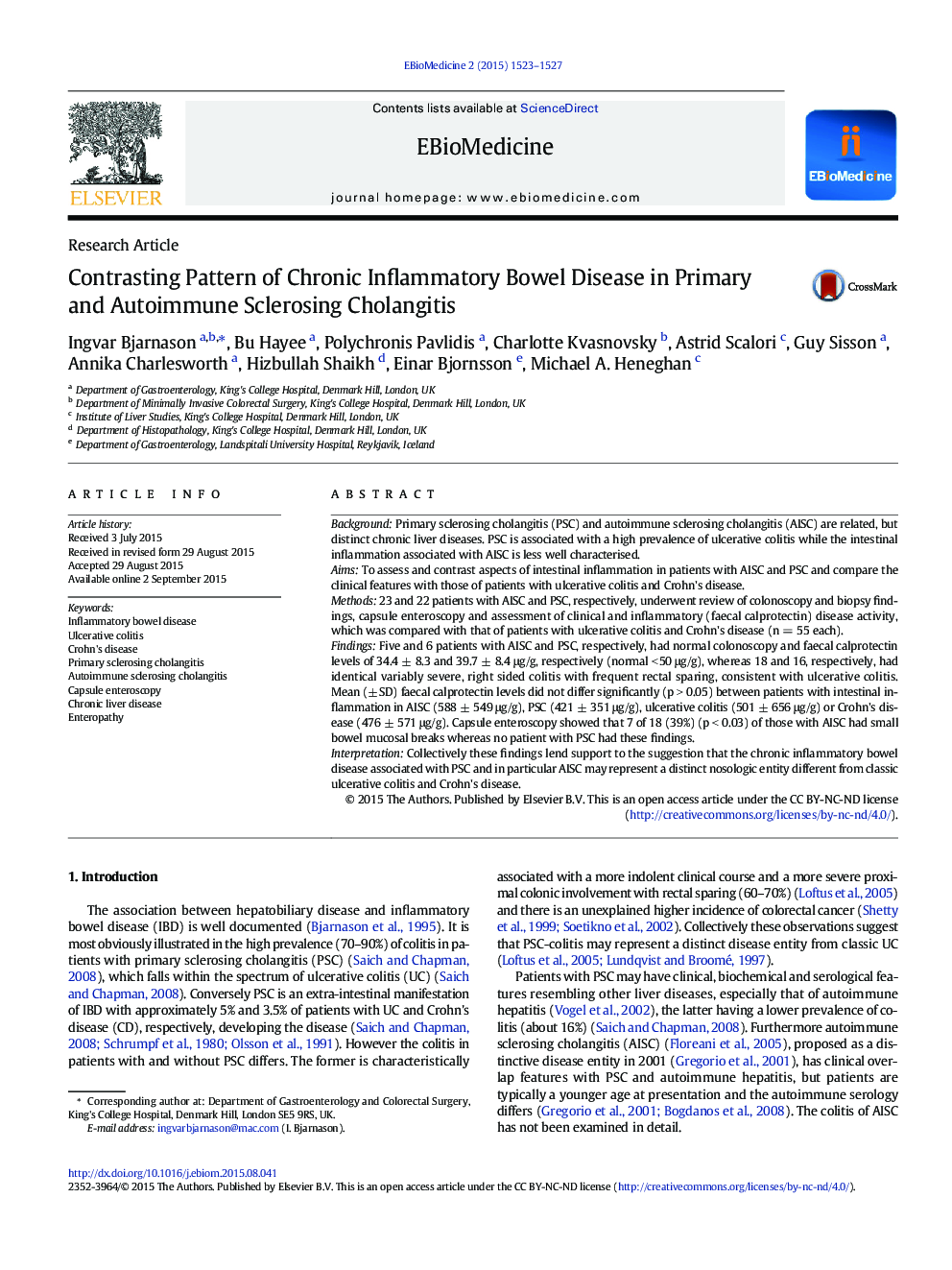| Article ID | Journal | Published Year | Pages | File Type |
|---|---|---|---|---|
| 2121242 | EBioMedicine | 2015 | 5 Pages |
•The ulcerative colitis (UC) associated with autoimmune and primary sclerosing cholangitis behaves differently to classic UC.•Patients with autoimmune and primary sclerosing cholangitis have similar pattern of colitis, resembling ulcerative colitis.•39% of those with autoimmune sclerosing cholangitis had small intestinal mucosal breaks resembling Crohn’s disease.•The colitis associated with these chronic liver diseases differs distinctively from classic inflammatory bowel disease.Most patients with the chronic liver disease primary sclerosing cholangitis have a colitis, which is classified as ulcerative colitis. Here we show that patients with a related liver disease, namely autoimmune sclerosing cholangitis, have an identical colitis, but 39% also have small bowel erosions or ulcers which is more suggestive of Crohn's disease. Intestinal inflammatory activity was similar in these patients as compared with patients with ulcerative colitis and Crohn's disease. Collectively these findings and the contrasting natural history of the colitis of chronic liver suggests that this represents a separate nosologic entity from classic inflammatory bowel disease.
BackgroundPrimary sclerosing cholangitis (PSC) and autoimmune sclerosing cholangitis (AISC) are related, but distinct chronic liver diseases. PSC is associated with a high prevalence of ulcerative colitis while the intestinal inflammation associated with AISC is less well characterised.AimsTo assess and contrast aspects of intestinal inflammation in patients with AISC and PSC and compare the clinical features with those of patients with ulcerative colitis and Crohn's disease.Methods23 and 22 patients with AISC and PSC, respectively, underwent review of colonoscopy and biopsy findings, capsule enteroscopy and assessment of clinical and inflammatory (faecal calprotectin) disease activity, which was compared with that of patients with ulcerative colitis and Crohn's disease (n = 55 each).FindingsFive and 6 patients with AISC and PSC, respectively, had normal colonoscopy and faecal calprotectin levels of 34.4 ± 8.3 and 39.7 ± 8.4 μg/g, respectively (normal < 50 μg/g), whereas 18 and 16, respectively, had identical variably severe, right sided colitis with frequent rectal sparing, consistent with ulcerative colitis. Mean (± SD) faecal calprotectin levels did not differ significantly (p > 0.05) between patients with intestinal inflammation in AISC (588 ± 549 μg/g), PSC (421 ± 351 μg/g), ulcerative colitis (501 ± 656 μg/g) or Crohn's disease (476 ± 571 μg/g). Capsule enteroscopy showed that 7 of 18 (39%) (p < 0.03) of those with AISC had small bowel mucosal breaks whereas no patient with PSC had these findings.InterpretationCollectively these findings lend support to the suggestion that the chronic inflammatory bowel disease associated with PSC and in particular AISC may represent a distinct nosologic entity different from classic ulcerative colitis and Crohn's disease.
